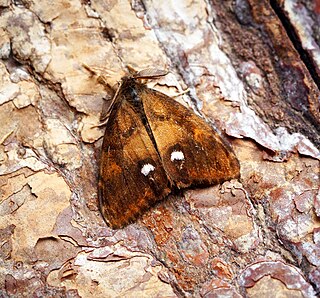
The family Lymantriidae contains the "tussock moths", of which 11 have been recorded in Great Britain:

- Laelia coenosa , reed tussock — extinct
- Orgyia recens , scarce vapourer — east-central (Red Data Book) ‡
- Orgyia antiqua , vapourer — throughout
- Dicallomera fascelina , dark tussock — south, west-central & north-east (localized)
- Calliteara pudibunda , pale tussock — south & central
- Euproctis chrysorrhoea , brown-tail — south, south-east & east-central (localized)
- Euproctis similis , yellow-tail — south, central & north
- Leucoma salicis , white satin — south, east-central, west-central & north (localized)
- Arctornis l-nigrum , black v moth — immigrant & transitory resident
- Lymantria monacha , black arches — south & central (localized)
- Lymantria dispar , spongy moth — immigrant (formerly resident)
Species listed in the 2007 UK Biodiversity Action Plan (BAP) [1] are indicated by a double-dagger symbol (‡)—species so listed for research purposes only are also indicated with an asterisk (‡*).



